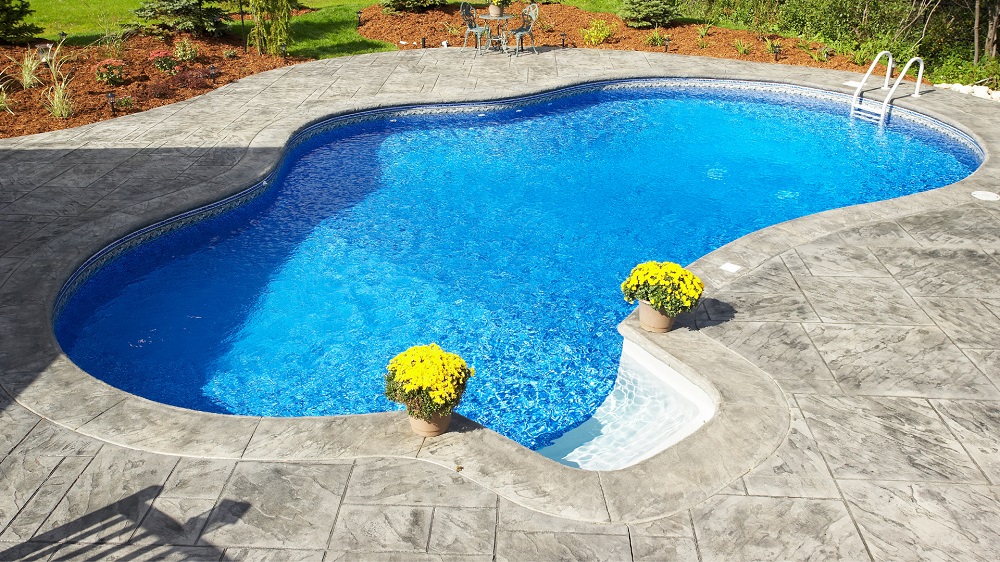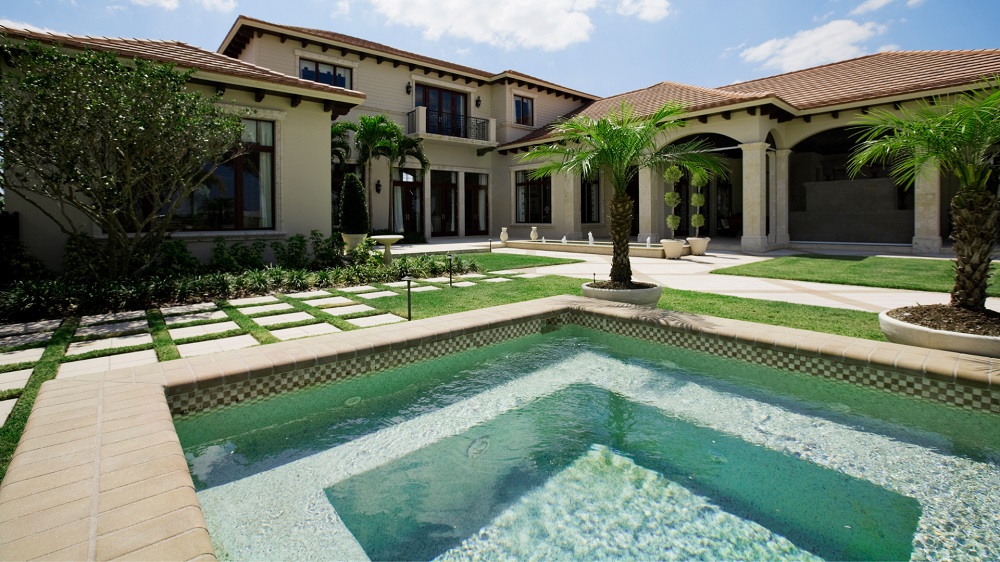What Is Pool Coping and Why Does It Matter?
Planning a pool project? Then you know you’re going to have to choose a type of pool coping. But…
What is pool coping anyway?
And why is it such an important part of your pool?
Learn everything you need to know in this 5-minute read.
What is pool coping?
Pool coping is the protective lip that goes around the edge of your pool and sits on the very top of the pool wall (in the case of a concrete pool, it sits on top of the bond beam).
It’s available in a wide variety of shapes, colors, and materials — concrete, natural stone, composite materials, cantilevered, bullnose, pavers, and more!
Keep going in the next section to learn more about different types of coping.
Pool Coping Basics: Types of Pool Coping
Here are some of the most common types of pool coping you’ll find.
Poured Concrete

Poured concrete pool coping is cost-effective and durable. It can be stamped for a variety of finishes and even to look like natural stones.
Natural Stone

Natural stone pavers like flagstone, marble, granite, and travertine are popular choices for high-end inground pools.
Precast Pavers

Thanks to their versatility, manufactured coping stones and pre-cast concrete pavers are a popular choice. This style of coping comes in a wide range of colors to match almost any custom pool design.
Brick

Small brick pavers are a budget-friendly option that works well around curved sections.
Travertine

Travertine is a natural stone that’s a popular coping option for a high-end look. It’s super durable and has a slip-resistant surface.
Bullnose

Instead of a square edge, bullnose coping has a rounded edge. Its finished edge has a softer look and is also more comfortable when getting in and out of the pool.
Why do you need swimming pool coping?
Now that we’ve covered some of the main types of pool coping, let’s move on to what it actually does for your pool. You might be surprised!
Helps Keep Your Pool Structurally Sound
The coping helps separate the pool structure from the surrounding patio. Why is that important?
Well, your pool and patio will expand, contract, and settle differently. So depending on the type of pool you have, it may need a place where they are not connected. Otherwise, if your pool settles faster than the deck, it would cause cracks in the pool walls and major problems!
Safety and Convenience
Spend enough time with your kids around the pool and eventually you’ll end up yelling “Don’t run by the pool, you’ll slip and fall!”
The right pool coping can help you and your kids avoid falls by providing a slip-resistant surface around the pool’s edge where it gets wet.
Aesthetics and Style
Pool coping does to your pool what a frame does to a picture — enhance its appearance. Contrasting colors can make your pool stand out more. Large stones provide natural beauty and a rugged appearance. And travertine pool coping gives a high-end look and durability to match.
Speaking of durability…
Durability
The pool edges take a lot of abuse. You’ve got kids jumping off them and using them to climb out of the pool. Plus, they get soaked in water and harsh pool chemicals. So pool coping provides a layer of extra durability right where it’s needed.
Helps Keep Your Pool Clean
Most pool coping slopes away from your pool. You can especially see this with raised bullnose coping. The purpose of that is to help direct water away from the pool.
Once water gets splashed out onto the pool deck, you don’t want it draining right back into the pool. That’s because now it’s mixed with dirt and other debris from outside the pool. So the coping helps direct that dirty water away so you don’t have to clean the pool as often.
Make the Right Choice
Hopefully, this quick guide will help you to make the right choice with your pool coping. But since pool coping installation is not a DIY-type project, you’re going to have to hire a professional contractor.
Whether you’ve got a vinyl, fiberglass, or gunite pool, if you’re in the Garland, Dallas, Texas area, give us a call today at A&X Masonry to get your free quote!
And don’t miss our other articles to learn more about different types of pool coping:
7 Types of Pool Coping | Compare the Choices Here
